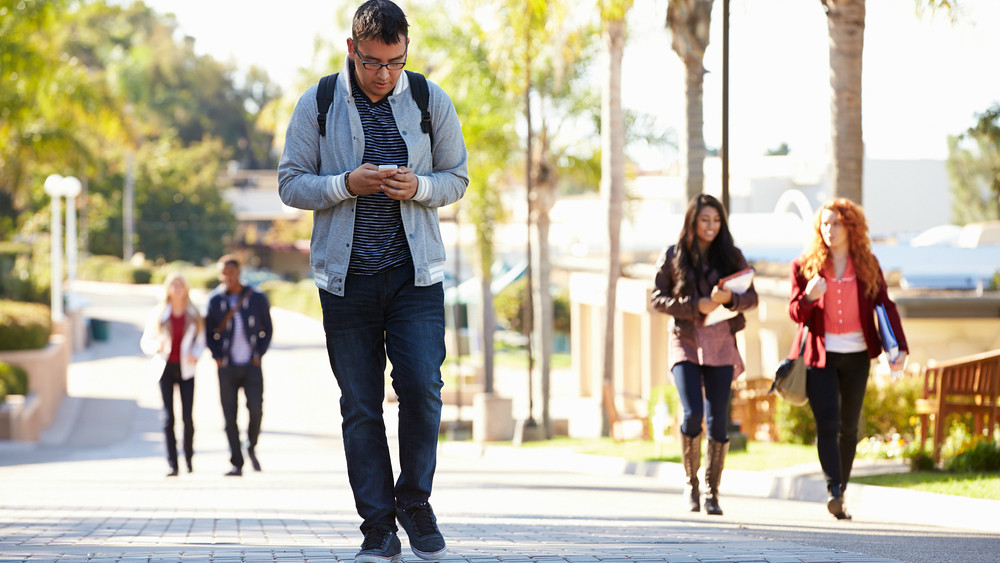This is according to a new study published in the journal PLOS ONE led by researchers and students from our Department for Health and Texas A&M University.
Walkers regularly text on a mobile phone, but little research has been conducted to examine how the walkers' gait changes when texting. The authors of this study examined the effect of texting, and walking while being cognitively distracted, negotiating curbs and other common pedestrian obstacles.
Look up!
Thirty participants, aged 18-50 years-old, completed three randomised walking tasks through an obstacle course while walking normally; texting and walking; and walking while at the same time being 'cognitively distracted' with a simple maths test.
The researchers analysed the walkers gait using a three-dimensional motion analysis system and modelled each task to assess differences between trails.
They found that participants took significantly longer to complete the course while texting and being cognitively distracted, compared to just walking. Texting and being cognitively distracted also increased obstacle clearance, decreased step frequency and an individual’s ability to walk in a straight line.
The authors of the study highlight how participants, when faced with cognitive challenges, decreased their walking speed to avoid accidents. They found that texting causes people to slow their pace and make large, exaggerated movements to negotiate crowds and compensate for their diminished vision.
One of the researchers involved, Dr Conrad Earnest, now at Texas A&M University, said: "This study shows that people who are walking, texting and undertaking mental tasks may potentially slow their pace and alter their gait as a protective measure to perform all the required tasks simultaneously.
"However, one cannot discount a certain “bias” as participants are stepping onto a built obstacle course, so despite their best intentions, may adopt a more cautious gate due to the experiment. Only time and more epidemiological oriented studies assessing injuries will be able to shed light on what happens in the real world.”
The perils of texting on the move
Dr Polly McGuigan, Lecturer in Biomechanics within our Department for Health, further explained: "This was an undergraduate research project investigating a very real problem. On campus, in the City and all over the world you encounter people texting and reading their phones while walking and we were curious about how this affected the way they walk and potentially their risk of having an accident.
“Our study was different to a lot of the studies which have looked at this before because we asked the participants to walk around an obstacle course in the lab rather than just in a straight line or on a treadmill. The obstacles were based on everyday things that you might have to navigate whilst waking around town: a curb, steps, bollards, people.
“We found that our participants were very good at adapting the way they walk to limit their risk of injury, and there were very few occasions when a participant hit an obstacle. This may be because many of the participants had grown up using a mobile phone and are very used to multi-tasking.”
The authors suggest the group involved in this study may be more familiar with walking while interacting with mobile phones and that further research may be needed to examine older participants, who may be at a greater risk of tripping when walking.
The study also involved two industrious students, Sammy Licence and Robynne Smith, who at the time were completing the BSc in Sport & Exercise Science.
To access the open-access paper ‘Gait Pattern Alterations during Walking, Texting and Walking and Texting during Cognitively Distractive Tasks while Negotiating Common Pedestrian Obstacles’ see http://journals.plos.org/plosone/article?id=10.1371/journal.pone.0133281.

